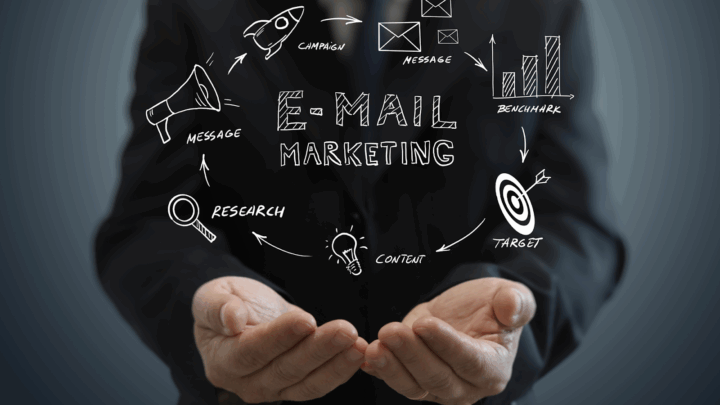
Ever feel like your marketing emails are disappearing into a black hole? You hit send, but instead of landing in inboxes, they end up in spam, or worse, never show up at all. With Google tightening authentication rules in 2024, deliverability has become one of the toughest challenges marketers face. But here’s the good news: improving your sender reputation isn’t guesswork.
There are proven strategies that can dramatically boost your chances of reaching the inbox. In this post, we’ll cover twelve practical steps you can take right now to strengthen deliverability and get your emails seen, opened, and acted on.
Why Email Verifier Technology Actually Moves the Needle
Here’s something most people miss: verification isn’t just about cleaning lists. It’s about fundamentally changing how Internet Service Providers perceive your sending behavior.
The Real Relationship Between Validation and Getting Past Spam Filters
Email validation creates a domino effect that directly impacts where your messages land. Think about it this way: when you scrub invalid addresses beforehand, ISPs notice your bounce rates plummeting. Their algorithms? They reward that kind of responsible behavior with better inbox placement.
You know what Gmail, Yahoo, and Outlook are really looking for? Senders who demonstrate they care about the recipient experience. Clean lists become your reputation’s best friend because these platforms continuously monitor sending patterns. Verified databases consistently prove you’re playing by the rules.
Before vs. After: Measuring What Actually Happens
Numbers don’t lie, and the transformation is often startling. Track your bounce rates, spam complaints, and inbox placement percentages, you’ll see verification’s real impact unfold.
Industry data reveals something powerful: verified lists routinely achieve 95%+ delivery rates while unverified databases struggle between 70-80%. The ROI calculation becomes crystal clear when you factor in reduced sending costs and improved email marketing tools performance across platforms like Mailchimp or HubSpot.
Smart marketers rely on an email verifier from established providers to maintain rock-solid delivery standards. Real-time verification APIs integrate seamlessly with your existing workflows, stopping problematic addresses before they contaminate your database.
The Core Methods That Actually Work
These aren’t theoretical concepts, they’re the fundamental techniques behind every successful deliverability strategy. Each one tackles specific failure points that regularly derail email campaigns.
Syntax Checking: Your First Line of Defense
Malformed addresses are campaign killers. They cause instant bounces that torpedo your sender reputation before messages even attempt delivery. Basic syntax validation catches the obvious stuff: missing @ symbols, weird characters, domain formatting disasters.
Here’s what happens next: ESPs start throttling senders who repeatedly submit garbage addresses. Your future sending capacity gets limited. Advanced syntax checking also spots those maddening typos like “gmial.com” instead of “gmail.com”, saving your campaigns from entirely preventable failures.
Domain Verification: Making Sure Messages Can Actually Get Through
MX record validation confirms destination domains can handle incoming email. This process prevents you from sending to non-existent domains that burn resources and trigger hard bounces.
Subdomain reputation becomes critical when domains have complicated sending histories. DNS propagation can temporarily mess with deliverability, but verification tools catch these issues early.
Mailbox Authentication: Eliminating the Guesswork
SMTP handshake verification connects directly to recipient servers without actually sending emails. This confirms mailbox existence with impressive accuracy compared to batch processing approaches.
Catch-all detection identifies domains that accept everything regardless of whether usernames are valid. These addresses don’t bounce, sure, but they rarely reach real people, which affects the engagement metrics ISPs monitor obsessively.
Next-Generation Email Verifier Tech for Peak Performance
Advanced verification pushes inbox placement rates even higher through sophisticated analysis and predictive capabilities. This represents where deliverability optimization is heading.
AI-Powered Analysis and Reputation Shield
Machine learning examines patterns across millions of addresses to predict deliverability success. These systems spot subtle warning signs that traditional verification completely misses.
Pattern recognition identifies spam traps and honeypot addresses that could obliterate your sender reputation overnight. Behavioral analysis helps predict which contacts will actually engage with your content, supporting smarter segmentation strategies.
Your Implementation Game Plan
Strategic implementation transforms verification insights into measurable delivery improvements. Here’s your actionable roadmap for immediate and sustained success.
Quick Victories for Immediate Impact
Target your newest email acquisitions first, you’ll see bounce rates improve fastest here. Focus on high-volume segments since these deliver the biggest sender reputation impact.
Priority verification includes newsletter signups, lead magnets, and customer database imports. Identifying low-hanging fruit helps you achieve measurable results within 30 days.
Building Your Long-Term Strategy
Comprehensive verification demands ongoing list maintenance and regular re-verification schedules. Team training ensures consistent best practices across all email collection points.
Process documentation creates accountability while helping scale verification efforts as databases grow. Continuous improvement frameworks adapt to evolving ISP requirements and industry standards.
Performance benchmarking tracks progress over time and highlights areas needing attention. KPI dashboards provide verification of ROI visibility and help justify program investments.
The Bottom Line on Email Verification Success
Email verification transcends technical requirements, it’s become your most reliable tool for maintaining customer communication. These methods transform underperforming campaigns into consistent winners while safeguarding your sender reputation and maximizing inbox placement.
Strategic verification technology implementation ensures messages reach intended recipients, driving superior engagement and stronger business outcomes. Don’t wait until deliverability issues wreck your domain reputation. Start verifying now and watch your email performance transform completely.
Your Most Pressing Email Verification Questions
1. Why does email verification matter so much?
Picture email verification as your quality control system, it filters out problematic addresses before they damage your reputation. Validation reduces bounce risks, improves deliverability, and drives better audience engagement.
2. What’s the big deal about sender verification?
Send emails to unverified addresses, and a percentage will bounce back because those addresses don’t exist. High bounce percentages destroy your sender reputation since this behavior screams “spammer” to ISPs.
3. How frequently should I verify my lists?
Monthly verification works perfectly for active lists, with additional checks before major campaigns. Rapidly growing databases might need weekly verification to maintain optimal deliverability and prevent degradation.
